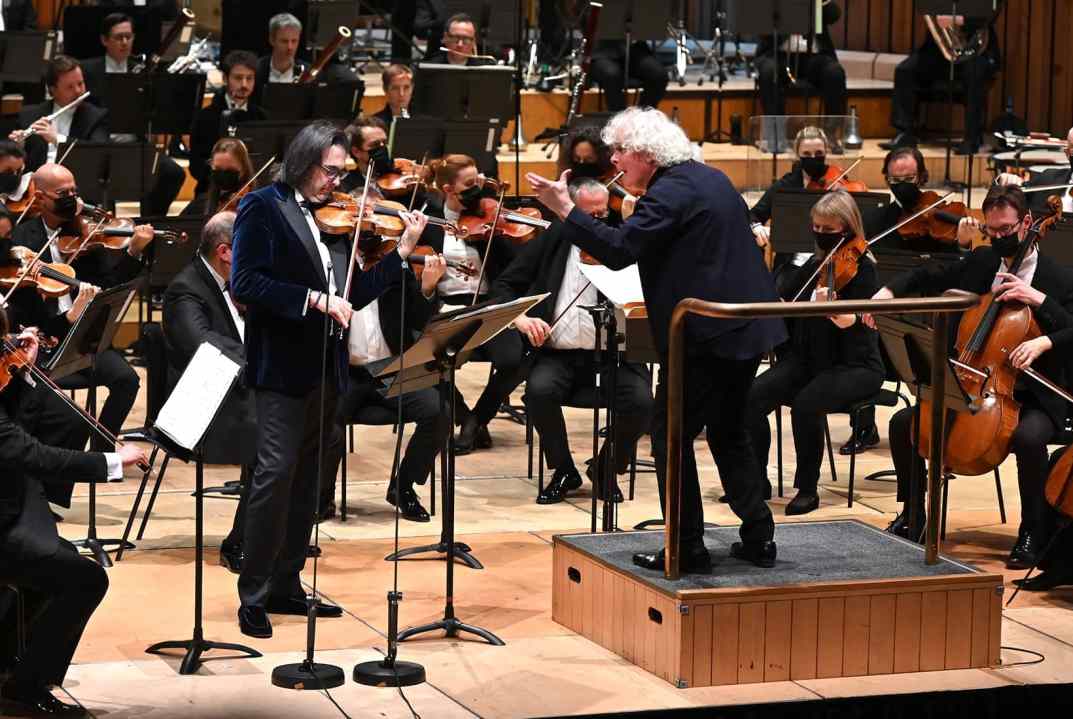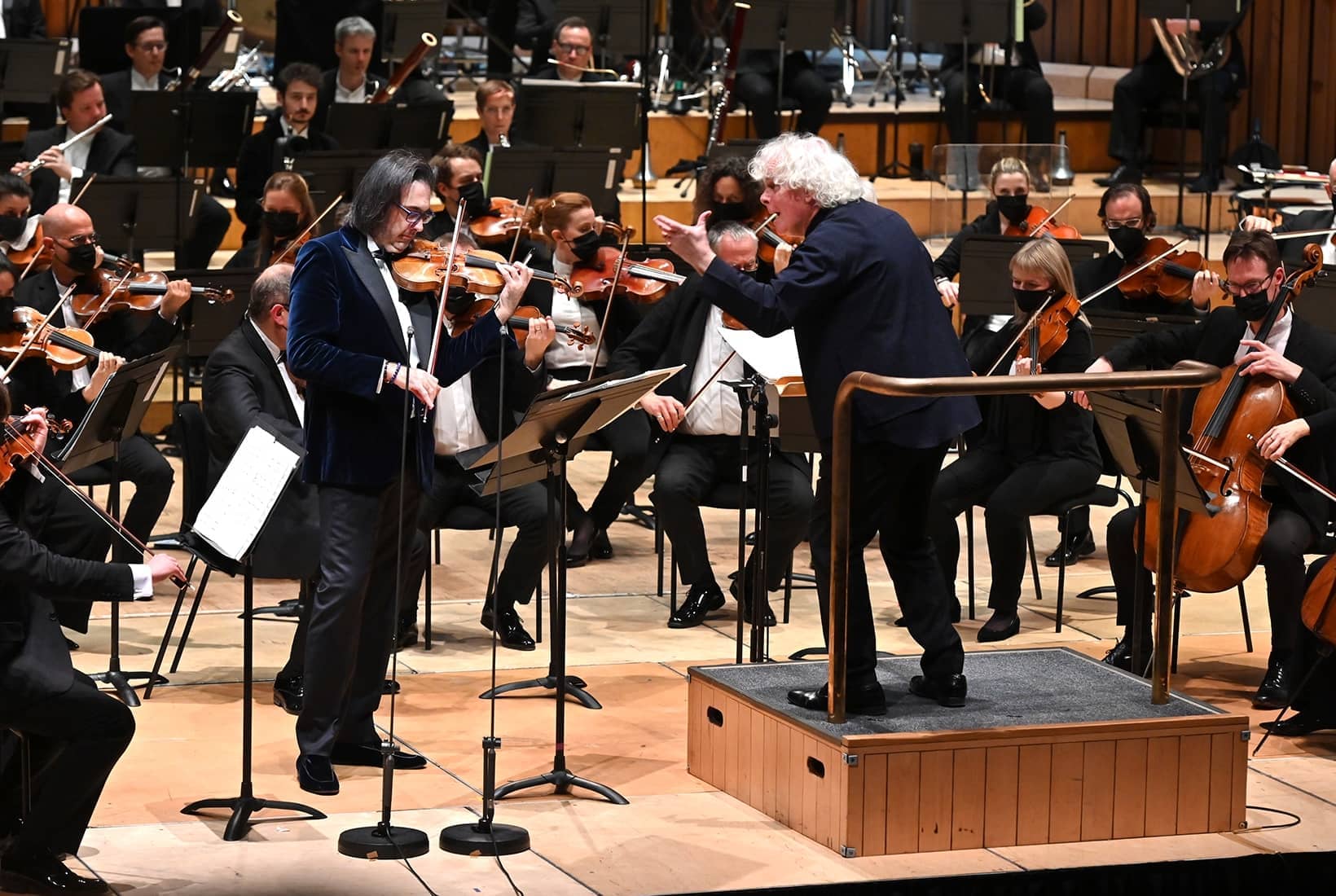Sir Simon Rattle and the London Symphony Orchestra began the year with a world première. Unsuk Chin’s Second Violin Concerto opened with the soloist, Leonidas Kavakos, completely alone in front of a silent orchestra, playing phrases that rocked back and forth until, suddenly, they were striking sparks. As well they might; Kavakos, after all, is the reason that the concerto exists — the violinist whose ‘burningly intense’ (the composer’s words) artistry has prompted Chin to break her self-imposed rule of writing only one concerto for any given instrument. She explained in the programme notes that ‘the solo violin part forms the foundation of the whole score, the soloist triggering all of the orchestra’s actions and impulses.’
Well, composers say a lot of things. The modern composer-written programme note is a curious sub-genre; you’re not doing it right unless you’re talking about ‘motivic proto-cells’ or ‘ritual-like repetitive pulsations’ (and the concerto’s title, Scherben der Stille — ‘Shards of Silence’ — doesn’t really get us much further). The point — and it’s rare enough to deserve comment — is that Chin’s concerto actually does what she says it does. Kavakos is front and centre, and he’s a violinist who sounds (it’s been said, but it’s still true) like a Greek god: the genuine, old-school virtuoso article, lustrous, muscular and glistening with vibrato. Even pianissimo, there’s never much chance that Kavakos isn’t going to come soaring through. It’s the kind of sound upon which a composer really can balance a whole orchestra.
Kavakos’s sound is one upon which a composer really can balance a whole orchestra
Which is just as well, because Chin’s orchestra is large — augmented low brass, plus the full kitchen cupboard of tuned percussion and keyboards. Chin is a supreme colourist; her experience in electronic music prompts her to think differently about orchestral sound. One of the curiosities of acoustics is that a note acquires much of its audible colour from the initial attack. Just as the sense of taste can be disabled by pinching the nose, the precise make-up of (say) a woodwind chord whose beginning is inaudible becomes almost undecipherable. Chin is adept at this — obscuring the edges, and creating sonorities that simply emerge pre-blended, as wonderful and as puzzling as a colour beyond the visual spectrum.
At moments like this, the silver thread of Kavakos’s violin allowed the ear to orient itself, and supplied a genuine musical argument too. That’s the other striking thing about the new concerto.
There’s logic here, and even more crucially, there’s clarity: Chin’s recurring ideas are distinctive enough to trigger recognition. The fast music, too, is actually fast. One gets so used to hearing contemporary composers pedalling breathlessly on the spot that Chin’s forward acceleration is at first alarming, and then thrilling.
Reservations? Kavakos can carry a piece of such extrovert complexity, for sure, but you do wonder how many other violinists could make it sound quite so assured. Chin mentions a cadenza but I couldn’t distinguish it from the overall texture; and when the orchestral violins are playing music that’s scarcely less difficult than the solo line (and the LSO strings practically glittered), it can be hard to separate the picture from the frame. But for now, before a large and enthusiastic audience on a dismal early January night, the piece and the performance felt like a booster shot of sunlight.
The same applies to the Royal Opera House’s revival of The Marriage of Figaro, and fair play to whoever decided to programme it in the post-Christmas panto slot: David McVicar’s production is comfort food that won’t add a single empty calorie to your New Year penance regime. It’s been revived and reviewed frequently since its 2006 debut, although (daft as it now seems) I was deterred, back then, by posters depicting a gun-toting Figaro storming the barricades — a sort of upmarket Les Mis. Mozart into political dogmatism won’t go: as a Catholic, as well as a man of the Enlightenment, his moral universe is defined by the possibility of repentance and forgiveness. Increasingly, 21st-century opera directors seem to find that a challenge.
Anyway, this was my first encounter with McVicar’s production, and thanks to a string of cancelled trains I caught only Acts Three and Four. From the fragment I saw, the updating to France in the reign of Louis Philippe serves no particular function but looks very handsome. McVicar’s direction is lively, detailed and playful; Pappano, in the pit, is exuberant, and the cast is dominated by Italian-born singers who bring a lip-smacking sparkle and sensuality to the recitatives and ensembles, even if none of them quite hits it for six in their big arias. (Ricardo Fassi as Figaro, and Giulia Semenzato, as Susanna, are clearly made for each other.) I’ve seen subtler Figaros but this looked and sounded good, and the audience laughed a lot. If you’re going as a New Year treat, I don’t think you’ll be disappointed.







Comments